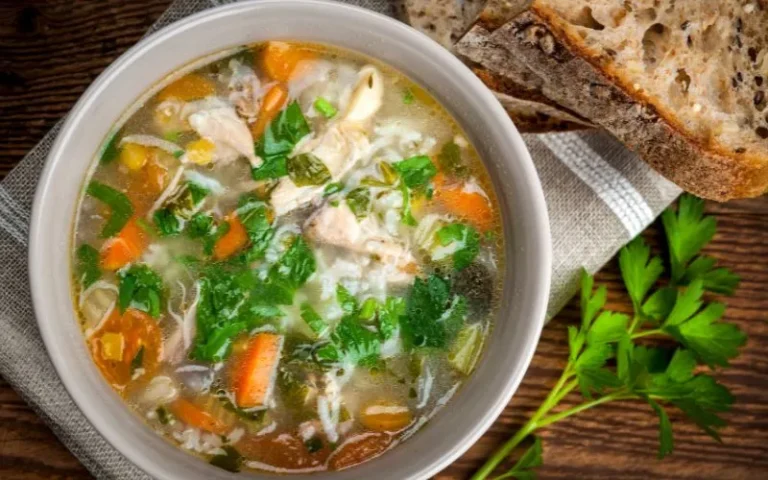You’ve probably never thought twice about krill those tiny, shrimp-like creatures floating in the ocean. But here’s the wild part: they feed the biggest animals on Earth, help slow climate change, and glow in the dark. Not bad for something smaller than your pinky. If that sounds surprising, wait until you read these krill fun facts.
Think of krill as the quiet engine of the ocean. You don’t see them making headlines, but much marine life would fall apart without them. Whales, penguins, and fish depend on krill like we depend on groceries. Still, most people have no idea how important they are.
That’s why this article is packed with fast, surprising facts that’ll make you look at krill in a whole new way. Ever wonder how much krill a blue whale eats in a day? Or how something so small can impact the entire planet?
Let’s dive into 15 things about krill that are weird, wonderful, and way more interesting than you’d expect.
What Are Krill, Really?
Krill are small, shrimp-like creatures that live in oceans all over the planet. Most are about the size of a paperclip, but don’t let that fool you their impact is massive. They’re not shrimp, though they look like distant cousins. Biologists count over 80 species of krill, and they all have one thing in common: they’re a significant food source for bigger animals.
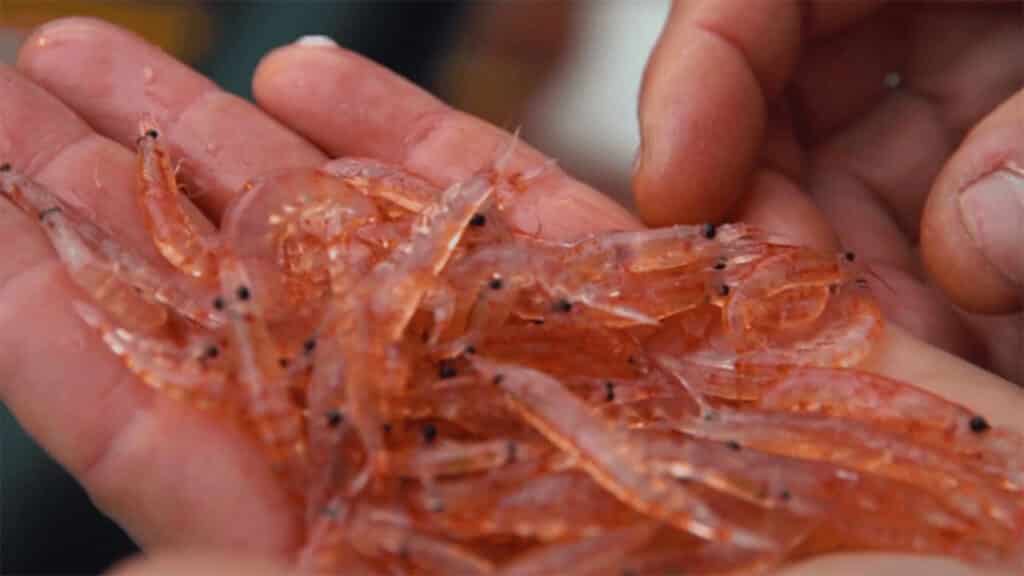
The most famous type is Antarctic krill (Euphausia superba), which lives in icy southern waters. These tiny crustaceans form gigantic swarms that sometimes stretch for miles. Some are so dense that satellites can spot them from space.
You might wonder, ” Why do they matter if they’re so small?” Simple. Krill eat phytoplankton tiny ocean plants that turn sunlight into energy. When krill eat the plankton, they store that energy as fat and protein. Then whales, seals, fish, and penguins eat the krill. No krill? No lunch for half the ocean.
In short, krill are the middlemen of the sea. They pass energy from the sun up the food chain. And considering their numbers we’re talking hundreds of millions of tons that’s a lot of power packed into a tiny body.
15 Fun Facts About Krill That Will Blow Your Mind
They’re small, but krill are full of surprises. Here’s a list of jaw-dropping facts that’ll change how you see ocean life maybe forever.
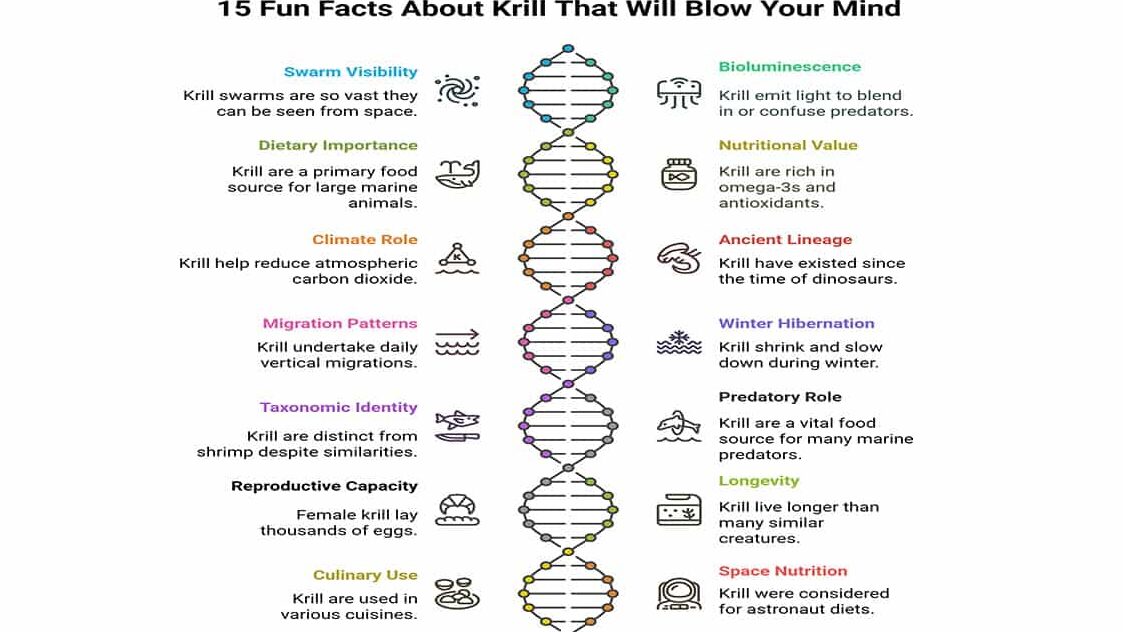
Krill Swarms Can Be Seen from Space
Yes, really. Krill often travel in giant swarms so dense and vast that they can be spotted from orbit. One swarm can stretch for miles and hold billions of krill. Imagine a moving patch of ocean that’s basically alive.
They Glow in the Dark
Some species of krill have built-in lights called photophores. These glowing spots help them blend into light filtering from above or confuse predators. It’s like underwater camouflage with a twist.
Blue Whales Eat Four Tons of Krill a Day
That’s right. The biggest animal on Earth survives almost entirely on the smallest. A blue whale can gulp down four tons of krill that’s about the weight of a pickup truck in a single day.
They’re Omega-3 Powerhouses
Krill is loaded with omega-3 fatty acids like EPA and DHA, plus an antioxidant called astaxanthin. That’s why krill oil is popular for joint, heart, and brain health.
Krill Oil Beats Fish Oil in One Key Way
Krill oil binds its omega-3s to phospholipids, which your body absorbs more easily than the triglycerides in fish oil. That means you can take a smaller dose and still get the benefits.
Krill Help Slow Down Climate Change
Here’s the deal: when krill eat plankton, they help move carbon from the surface to the deep ocean. That keeps carbon dioxide, a greenhouse gas, out of the atmosphere. Tiny cleaners with a global job.
They’ve Been Around Since the Dinosaurs
Fossil records show that krill have existed for over 130 million years. That means they were swimming around when T. rex ruled the land.
They Migrate Up and Down Every Day
Each day, krill travel from deep waters to the surface and back, up to 1,000 feet. It’s the largest daily migration of any animal on the planet, done in complete silence.
Krill Hibernate in Winter
When the cold, dark Antarctic winter hits and food gets scarce, krill shrink their bodies and slow everything down, like pressing pause until conditions improve.
They’re Not Shrimp
They look like shrimp, sure, but krill belong to a different group of crustaceans. Their gills are on the outside and have different body parts and behaviors. Similar look, a different family. They’re part of the order Euphausiacea, while shrimp belong to the order Decapoda. So they’re more like distant cousins than siblings.
They’re the Ocean’s Go-To Snack
Whales, seals, penguins, squid, and fish eat krill. If it swims and has teeth, it probably has krill on the menu. Some animals rely on krill for up to 90% of their diet.
One Female Can Lay 10,000 Eggs
And they don’t stop there. During peak breeding season, a single female krill can release tens of thousands of eggs multiple times. That’s how they stay so abundant.
They Can Live for 5 to 10 Years
That might not sound like much, but that’s a surprisingly long life for something so small and low on the food chain. Many similar ocean creatures don’t make it past a year.
Krill in Global Cuisine
Krill are used in pastes, sauces, or as seafood snacks. They add a salty, umami flavor and are sometimes used in cooking, like anchovies or shrimp paste. The taste isn’t for everyone, but for seafood lovers, it’s a flavor bomb
NASA Studied Krill for Space Nutritionkrill in global cuisine
Because krill are nutrient-dense and shelf-stable in oil form, NASA once looked into using them as a food source for astronauts. Turns out they’re small but spaceworthy.
Why Krill Matters More Than You Think
Krill aren’t just ocean trivia they’re a keystone species. That means they hold the ecosystem together. By eating phytoplankton and being eaten by everything from whales to squid, krill keep the marine food chain flowing.
They’re also environmental indicators. When ocean temperatures shift or ice melts too early, krill populations often drop, as do the animals that depend on them. Scientists monitor krill to track changes in climate and ocean health.
So even though they’re tiny, krill give us a big-picture view of what’s going on in the sea.
Final Thought: Tiny Titans of the Ocean
Krill may be small, but they have an outsized role in the health of the oceans and even our own bodies. They’re ancient, essential, and surprisingly interesting. From feeding the giants of the sea to helping humans manage inflammation, they’re a perfect example of how the smallest creatures often have the biggest impact.
Got a favorite krill fact? Share it or better yet, keep exploring the ocean’s hidden wonders.


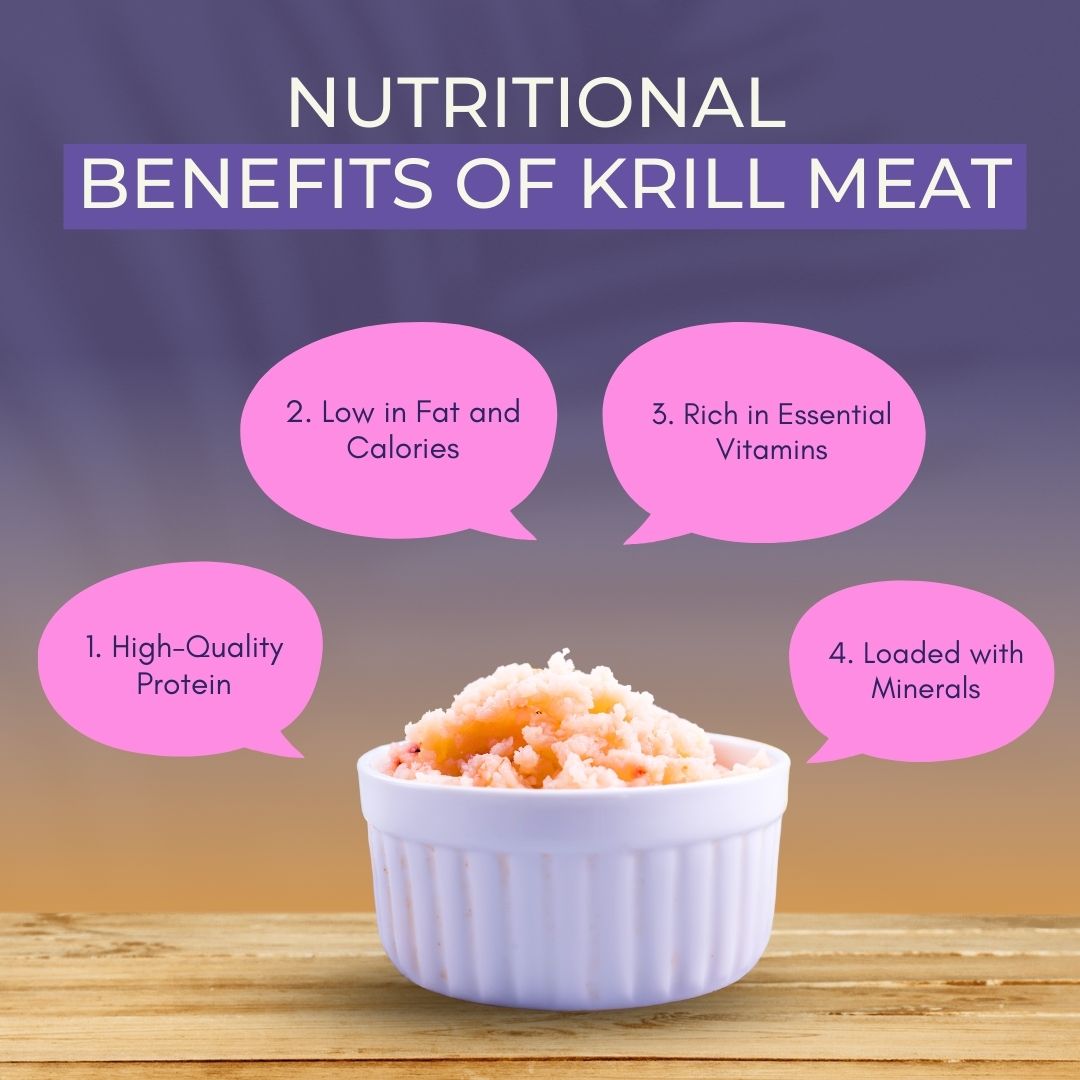
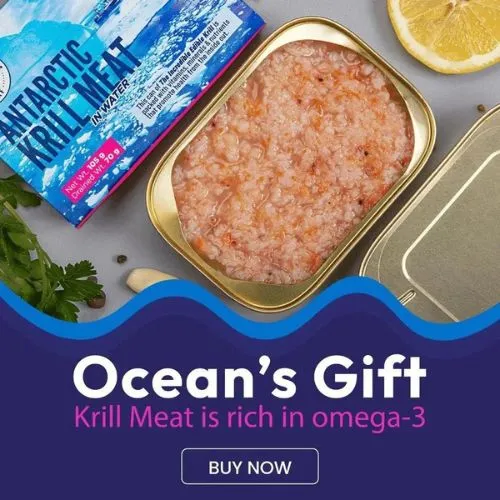
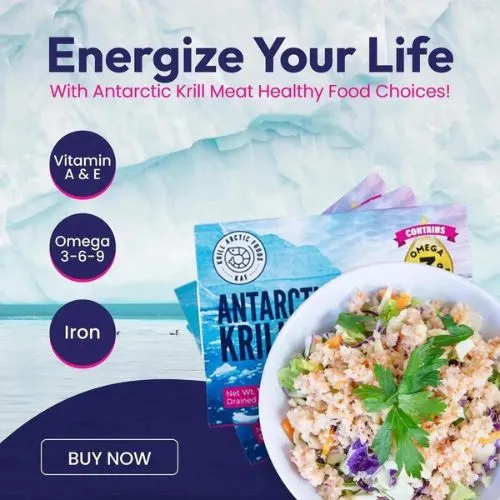
!["A collage featuring four sections: 1) Top left: A white protein shaker, bananas, purple dumbbells, and a red apple on a white surface. 2) Top right: A smiling woman in a black tank top holding a pink smoothie, with a blender and measuring tape beside her. 3) Bottom left: Four glasses of smoothies (white, peach, pink, brown) with straws, surrounded by ingredients like protein powder, nuts, oats, strawberries, and cocoa powder on a wooden table. 4) Bottom right: [Not described in the provided details]." This description covers the three explicitly described sections while noting the fourth quadrant's absence in the user's input. It emphasizes key elements like fitness tools, healthy ingredients, and the woman’s active lifestyle while incorporating SEO-friendly terms like "protein shaker," "smoothies," and "nutritional ingredients."](https://krillarcticfoods.com/wp-content/uploads/2025/05/10-Best-Meal-Replacement-Shakes-for-Healthy-Weight-Loss-768x450.jpg)
